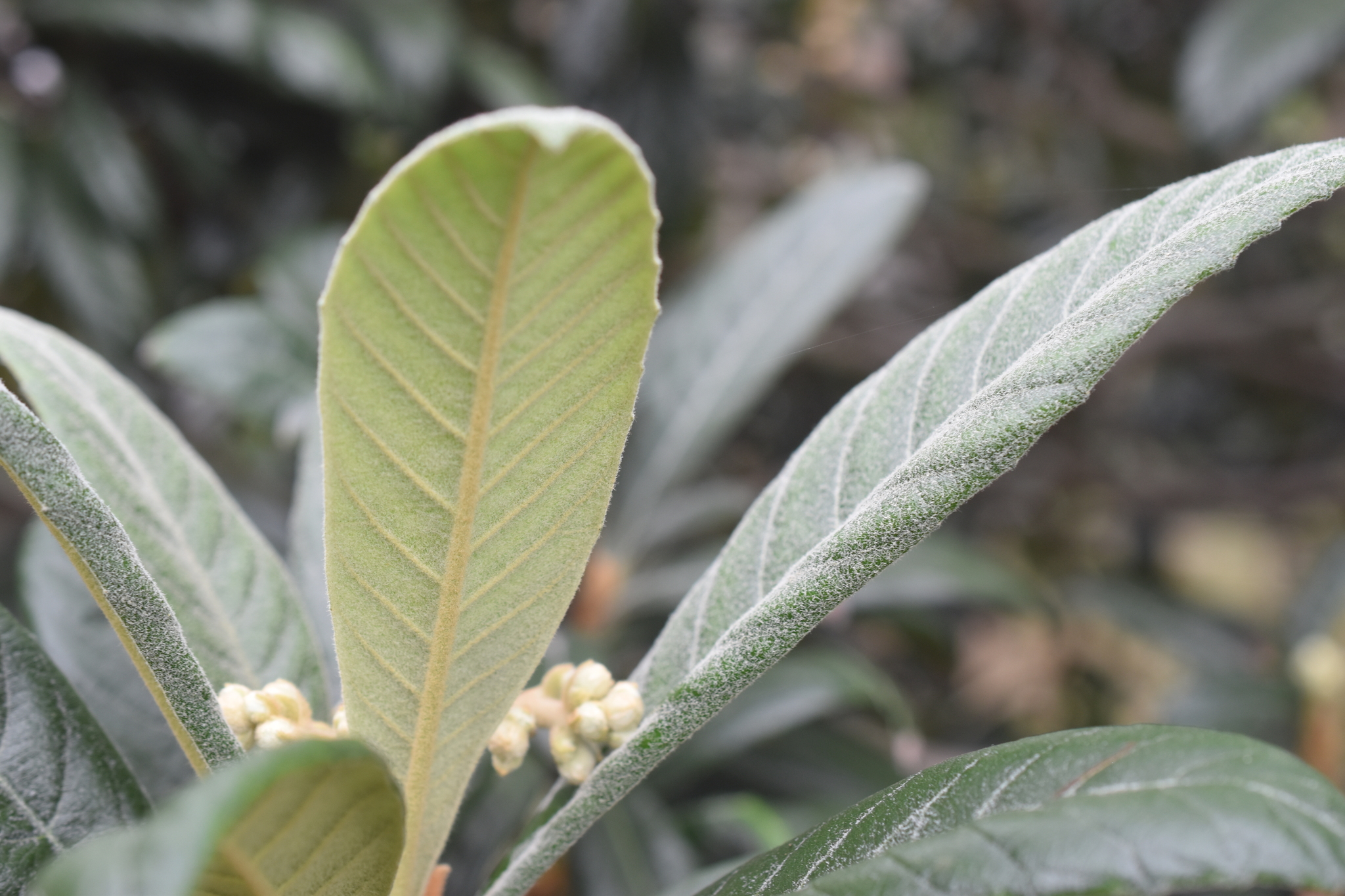
A broad-crowned tree 5-7 m tall, with a short trunk and wide-spreading branches sometimes to ground level. New growth covered with rust-coloured mat of hairs. Leaves elliptic to oblanceolate, 20-30 cm long, 5-8 cm wide, tough, with widespread teeth mostly above the middle, edges bent under, lateral veins prominent below, glossy dark green above, with a matt of rusty hairs below. Leaf stalk absent or up to 2 cm long. Flower clusters short, terminal, densely felted. Flowers white, about 2 cm wide, scented; Apr-May. Fruit fleshy, yellow, about 3 cm wide, in clusters; spring.
A popular planting on older properties and able to withstand hot inland conditions. Occasionally naturalised along roadsides in NSW, spreading by seed. Commercial development has been mainly in Japan; in Australia the Loquat is a minor crop. It is said to have been introduced by Chinese miners and was often planted near homesteads during early settlement. Cultivars have been selected for size, skin, and flesh colour, high flesh to seed ratio, flavour and low susceptibility to fruit fly. Cultivars available include 'Thames Pride', 'Variegata', 'Wanliss Pride', 'Weller' and the recent Japanese cultivars 'Nagasakiwase', 'Mizuho' and 'Tsukomo'. The cultivar 'Enormity', known as Pear Loquat, has been grown quite widely in WA.
The fruit may be eaten raw or in jams and preserves.
E. deflexa (Hemsl.) Nakai from Taiwan is occasionally offered; it has smaller fruit up to 2.5 cm wide.
E Asia.
ACT: Canberra (Australian National University, John Curtin School of Medical Research).
Source: (2002). Rosaceae. In: . Horticultural Flora of South-eastern Australia. Volume 3. Flowering plants. Dicotyledons. Part 2. The identification of garden and cultivated plants. University of New South Wales Press.

Eriobotrya japonica 'Variegata'
Leaves variegated.